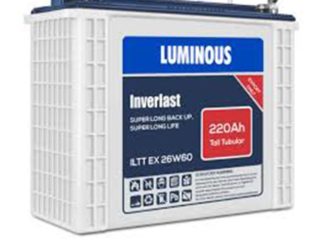This is a very common question people ask when they want to invest in inverter back up power for their households. I have to be forthcoming when I say about 70% of the budget is going to be spent on batteries. You can see the importance of this question. The first thing you need to determine is the kind of load you want to provide back-up for, this determines how much capacity you need to buy in terms of the inverter. How long the back-up power will last is usually determined by the battery or batteries capacity.
How many batteries do you need as a minimum?
The first basic thing that determines how many batteries you need is the DC voltage rating of the chosen inverter. The most common inverters are usually rated 12V, 24V, and 48V. Inverter (or car) battery is usually at 12V, so a 12V inverter will require a minimum of 1( then 2, 3,4, etc) battery, while a 24V battery will require a minimum of 2 (then 4, 6, 8, etc) batteries while a 48V inverter will require a minimum of 4 (and then 8, 12, 16, etc batteries. The voltage of the inverter is usually determined by the load capacity, the voltage rating of the inverter increases as the load increases. The small inverter of about 0.5kva to 1.5kva are usually 12v, the most common inverter rating needed for most households is usually 24V. Large offices might use a 48V rating inverter. Higher voltage inverters are usually more efficient.
How many batteries can you connect?
As said earlier, the number of batteries (or set of batteries) you connect to your batteries determines how long your back-up power will last. Theoretically, you can connect as many batteries as you can afford but you are actually limited by the maximum charging capacity of your inverter. Too many batteries on the inverter will overload the charging system and this can need to overheat and fire risk; this is similar to trying to drive a trailer with a Toyota engine and say it’s still an engine, you’ll blow the block, that’s guaranteed. Always refer to the manufacturer’s instruction on how many batteries (in AH) that your inverter can safely be connected to.
If you have any additional questions, don’t hesitate to ask in the comments section below. we’ll love to hear from you.



